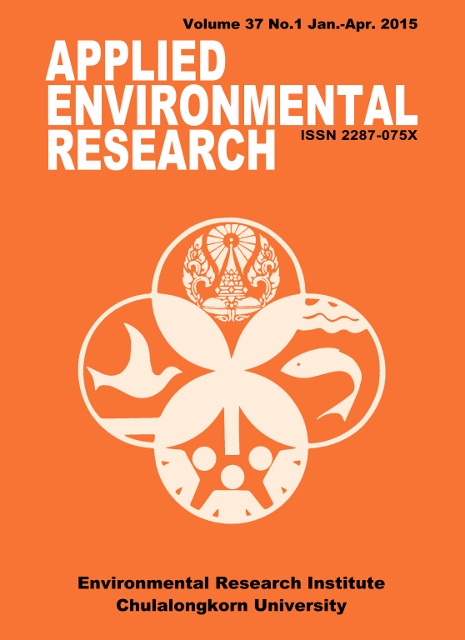Recovery of Metals from Electronic Waste by Reduction Melting Method
Main Article Content
Abstract
This study investigates application of the reduction melting method to recover metals from electronic wastes. The study began with determination of the optimal conditions for metal recovery from cathode ray tube (CRT) glass by melting under various conditions. The recovery of metallic lead and lead oxide (PbO) remaining in the glass residues for each set of melting condition were compared. It was found that the optimal condition for metallic Pb recovery from the CRT glass was melting the glass at 1200 oC for 1 h and then soaking at precipitation temperature of 500 oC for 1-2 h. Under these conditions, recovery rates of metallic lead from CRT glass reached up to 85-89 %. The optimal conditions identified in this preliminary study were then used to recover metals from a mixture of CRT glass and printed circuit boards (PCBs), as a proxy for electronic waste. Electron Probe Micro Analysis (EPMA) characterization indicated two categories of metal deposits; the first being metallic lead (Pb) and the second as a mixture of copper (Cu), tin (Sn), and antimony (Sb). The study also confirmed that incorporation of PCB did not affect lead recovery from CRT glass.
Article Details

This work is licensed under a Creative Commons Attribution-NonCommercial 4.0 International License.
Published articles are under the copyright of the Applied Environmental Research effective when the article is accepted for publication thus granting Applied Environmental Research all rights for the work so that both parties may be protected from the consequences of unauthorized use. Partially or totally publication of an article elsewhere is possible only after the consent from the editors.

